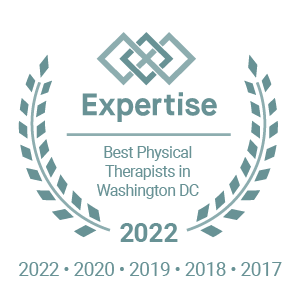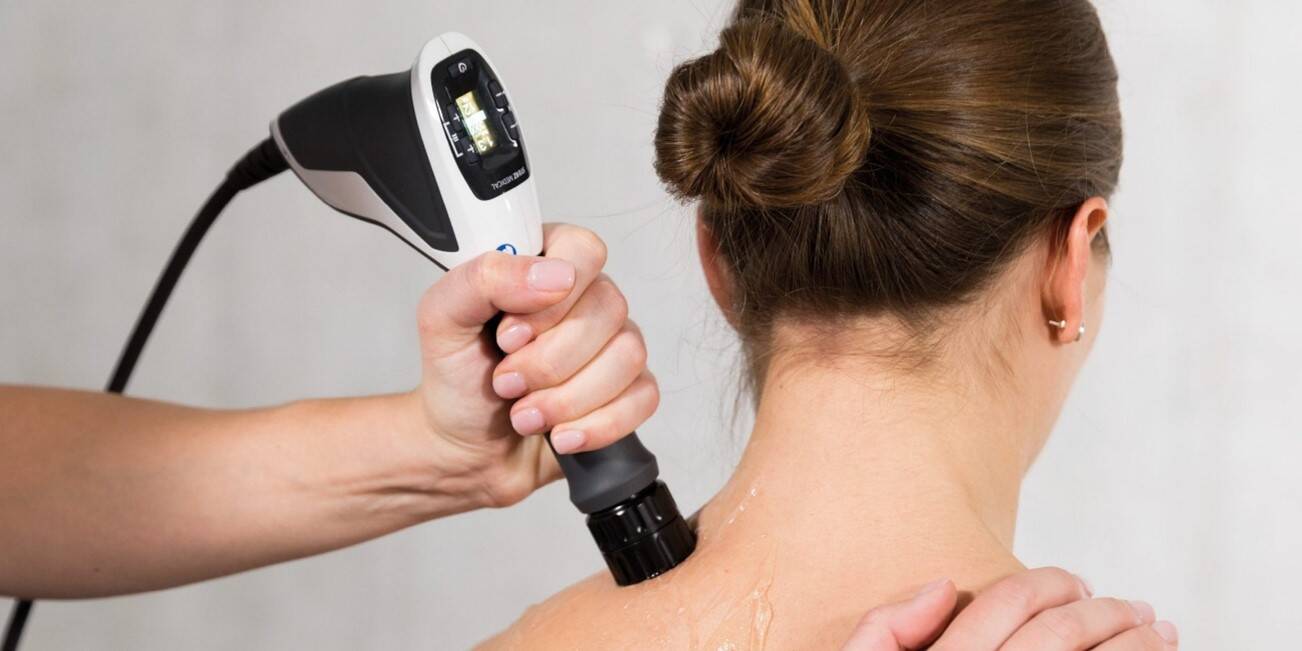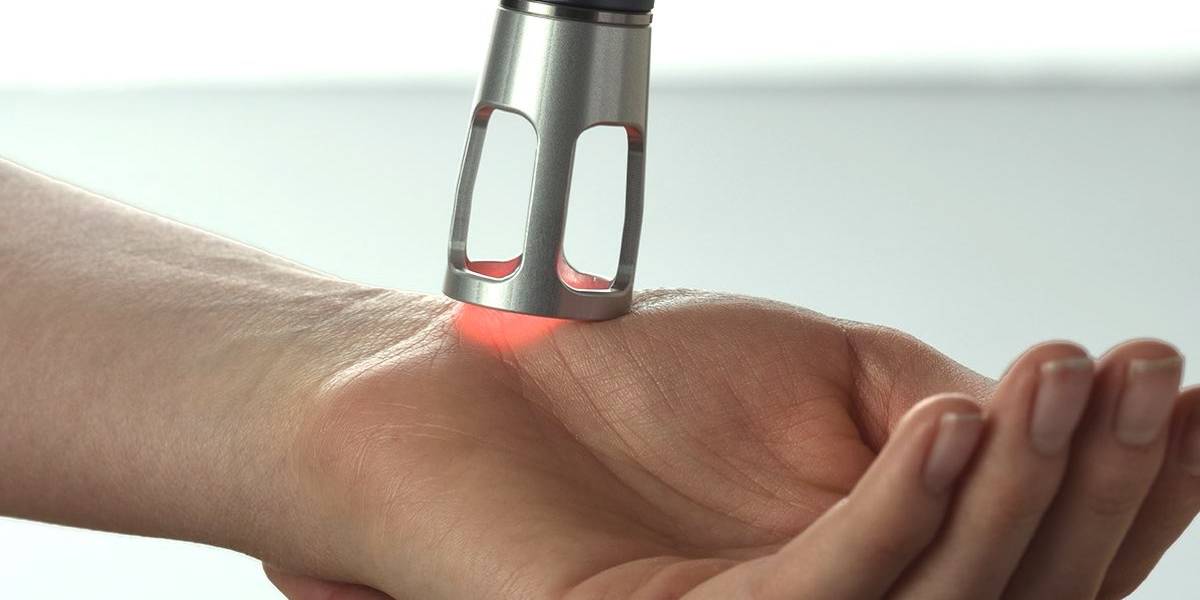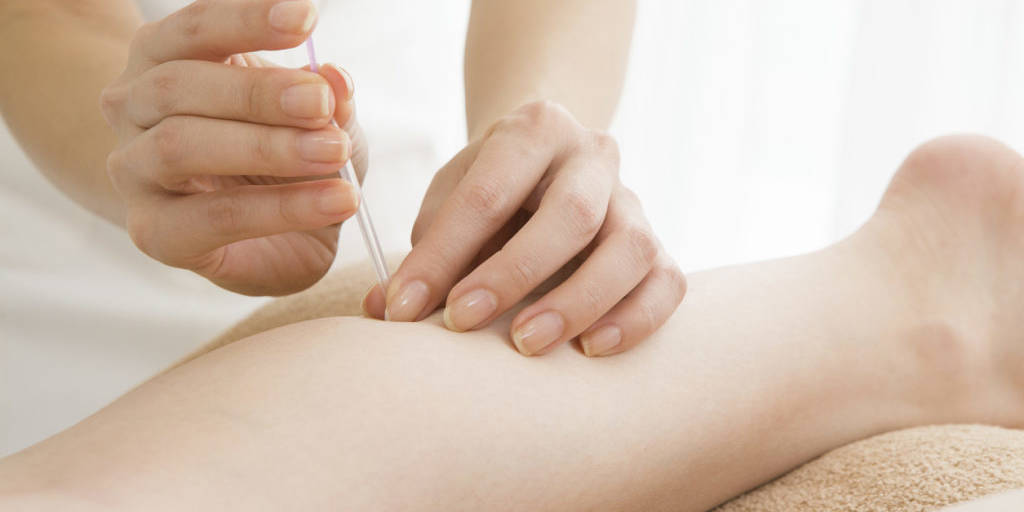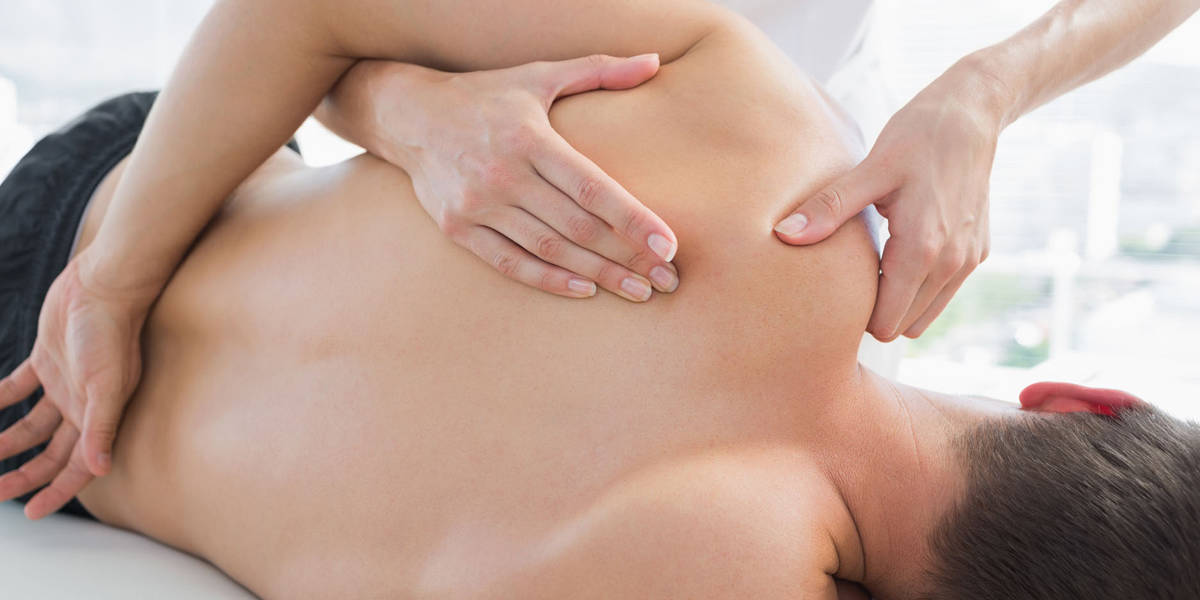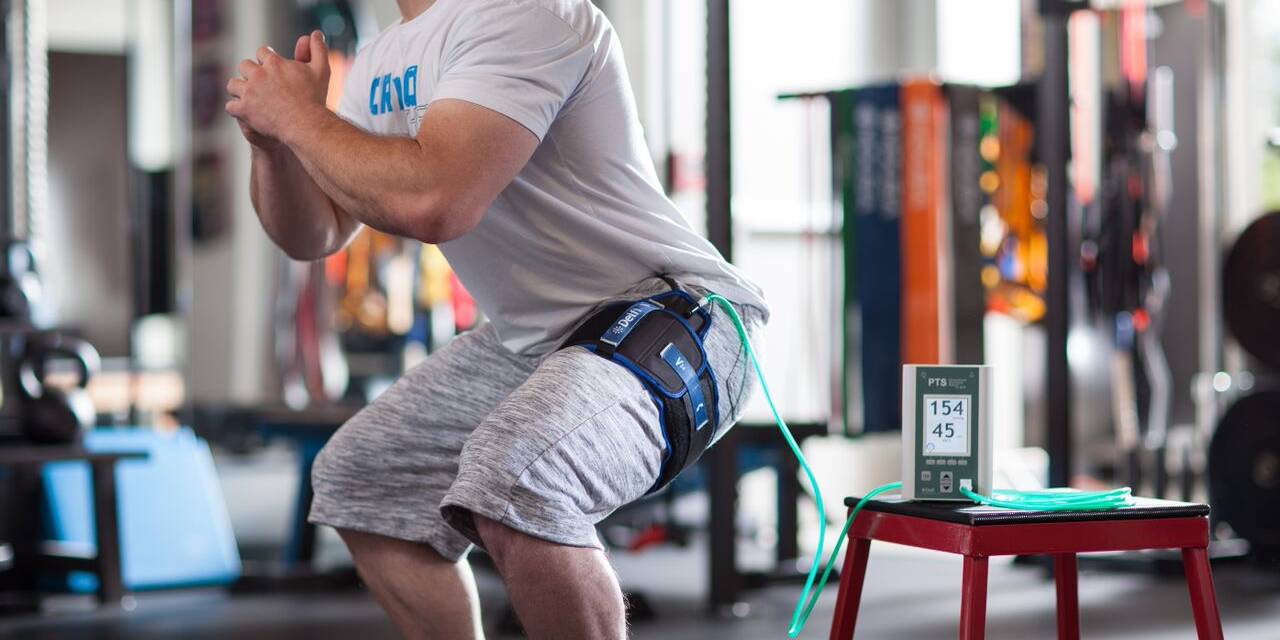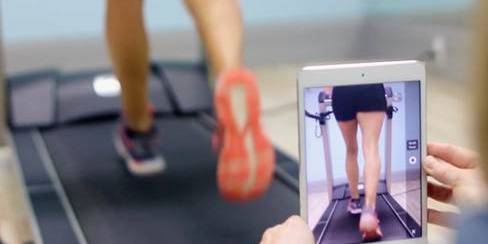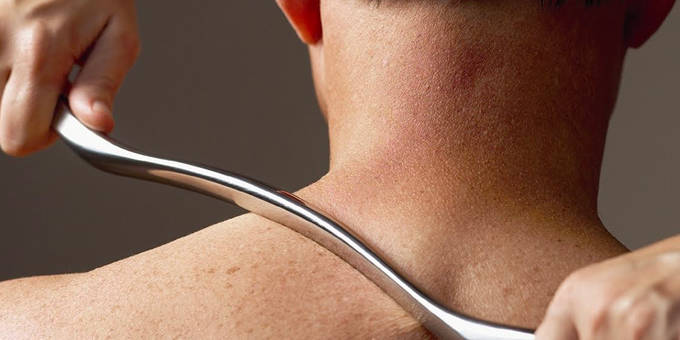Pelvic Floor Physical Therapy in Washington, D.C.
Physical Therapy Treatment for Pelvic Floor
What is your pelvic floor?
The pelvic floor refers to a group of muscles, ligaments, and tissues located at the bottom of the pelvis. These muscles play a crucial role in supporting our organs and maintaining bladder and bowel control. However, when these muscles become weak or dysfunctional, it can lead to various pelvic floor troubles including incontinence, pelvic pain, and sexual dysfunction.

Pelvic Floor Troubles: Causes, Symptoms and Physical Therapy
The Structure and Function of the Pelvic Floor
Imagine the pelvic floor as a mini trampoline, with several layers of stretchy, supportive material. At the front, it is anchored by the pubic bone, and at the back, it is attached to the tailbone. It has openings for the urethra, the vagina in women, and the rectum, allowing these organs to pass through while maintaining a firm, supportive structure. The main function of this complex system is to support the pelvic organs, assist in urinary and fecal continence, and provide core stability.
Pelvic Floor FAQs
- Muscles – these are responsible for providing support and stability to the pelvic organs, as well as controlling bladder and bowel function. They also play a vital role in sexual function by facilitating blood flow to the genitals and supporting orgasm.
- Connective tissue – this includes ligaments and fascia which provide structural support to the pelvic floor muscles.
- Nerves – these control the function of the pelvic floor muscles and provide sensation to the pelvic organs and the skin around the genitals.
- Blood vessels – these supply oxygen and nutrients to the pelvic floor muscles, allowing them to function properly.
A strong and balanced pelvic floor is crucial for preventing issues such as incontinence and pelvic pain. On the other hand, a weak or dysfunctional pelvic floor can contribute to sexual difficulties, including pain during intercourse and orgasmic issues.
Pelvic floor physical therapy exercises can help alleviate these troubles by strengthening the muscles of the pelvic floor, improving blood flow to the pelvic region, and enhancing muscle elasticity.
- Pregnancy and childbirth – the pelvic floor undergoes significant stress and stretching during pregnancy and delivery, which can lead to weakening or injury.
- Chronic constipation – straining during bowel movements can weaken the pelvic floor muscles over time.
- Aging – as we age, our muscles naturally lose strength and elasticity, which can affect the function of the pelvic floor.
- Obesity – excess weight can put additional pressure on the pelvic floor, leading to weakness and dysfunction.
- High-impact activities – repetitive high-impact exercises like running or jumping can strain the pelvic floor muscles and lead to dysfunction.
- Prostate surgery – in men, prostate surgery can damage the nerves and muscles responsible for controlling bladder and bowel function.
- Urinary incontinence – this could include leakage during activities like sneezing, laughing, or exercising, as well as a sudden urge to urinate that is difficult to control.
- Fecal incontinence – difficulty controlling bowel movements or leakage of stool.
- Pelvic organ prolapse – a feeling of pressure or bulging in the pelvic region, caused by weakened pelvic floor muscles unable to support the organs.
- Painful intercourse – tight or weak pelvic floor muscles can lead to discomfort or pain during sexual activity.
- Chronic pelvic pain – ongoing pain or discomfort in the pelvic region that is not caused by a specific medical condition.
Release Physical Therapy offers specialized treatment for pelvic floor dysfunction.
Treatment may include:
- Pelvic floor muscle training – also called Kegel exercises, involves learning how to properly contract and relax the pelvic floor muscles to improve control and strength.
- Biofeedback – Our pelvic floor physical therapists may use sensors to provide visual or auditory feedback on your muscle contractions. The aim is to help you learn how to properly engage and relax your pelvic floor muscles.
- Manual therapy – this can include massage, stretching, and manipulation techniques to help release tension in the pelvic floor muscles.
- Education on bladder and bowel habits – Some bad habits, such as holding urine for too long, can contribute to pelvic floor dysfunction. Our therapists will provide guidance on how to establish healthy habits for optimal pelvic floor function.
- Relaxation techniques – Certain relaxation techniques, such as diaphragmatic breathing and mindfulness, can help reduce tension in the pelvic floor muscles.
- Posture and body mechanics – Our therapists will evaluate your posture and movement patterns to identify any imbalances or compensations that may be contributing to your pelvic floor dysfunction.
- Pelvic floor muscle coordination exercises – These exercises involve integrating pelvic floor muscle contractions with movements of other muscles in the body, such as during squats or lunges.
- Dietary changes – Some dietary factors, such as consuming too much caffeine or acidic foods, can irritate the bladder and contribute to pelvic floor dysfunction. We also provide recommendations for a bladder-friendly diet.
- Supportive devices – Depending on your specific needs, our therapists may recommend the use of supportive devices such as pessaries or dilators to help improve pelvic floor function.
- Collaborative approach – Release Physical therapists can work closely with your healthcare team to ensure a comprehensive and personalized treatment plan for your individual needs.
We understand that pelvic floor dysfunction can greatly impact your quality of life. That’s why our team is dedicated to providing compassionate care and effective treatment options for all forms of pelvic floor dysfunction.
Yes. Pelvic floor physical therapy has had incredible success in helping our clients alleviate their pelvic pains, improve bladder control, enhance sexual function, enhance postpartum recovery, and ultimately improve their overall quality of life.
Biofeedback, relaxation techniques, and support devices mentioned above are all effective treatments for pelvic floor dysfunction. However, the most effective treatment will vary depending on the individual needs and condition of the patient. For example, someone with hypertonic pelvic floor muscles may benefit more from relaxation techniques, while someone with weak pelvic floor muscles may see better results with strengthening exercises.
That’s why our team at Release Physical Therapy takes a comprehensive approach, combining various interventions to create an individualized treatment plan for each client.
On the first day of pelvic floor physical therapy at Release Physical Therapy, a skilled and licensed physical therapist will conduct a thorough evaluation and assessment of your pelvic floor muscles. This may include asking questions about your symptoms and medical history, as well as performing internal and external examinations to assess muscle tone, strength, and coordination.
Based on this information, the therapist will then create a personalized treatment plan that may include biofeedback training, relaxation techniques, manual therapy, exercise prescription, or other interventions as needed.
We take our clients’ privacy and comfort seriously, so rest assured that all evaluations and treatments will be conducted in a private treatment room.
A typical pelvic floor physical therapy session at Release Physical Therapy will last for about 55 minutes. Sessions may involve a combination of treatments such as biofeedback, manual therapy, dry needling, therapeutic exercise, and education on self-care techniques.
Our experienced physical therapists will guide you through each technique and ensure that you are performing them correctly to achieve maximum benefit. They will also track your progress and make any necessary adjustments to your treatment plan as needed.
There are several signs and symptoms that may indicate a need for pelvic floor physical therapy. These include pain or discomfort in the pelvic region, urinary or bowel dysfunction, painful intercourse, and pelvic organ prolapse. Other conditions such as pregnancy, postpartum recovery, and pelvic surgery may also benefit from pelvic floor therapy. If you are experiencing any of these issues, consult a licensed physical therapist to determine if pelvic PT is right for you.
While pelvic floor exercises, specifically Kegel exercises, are generally safe and beneficial when done correctly and consistently, they can potentially be harmful if not performed properly. Overdoing it prematurely or engaging the incorrect muscles can result in discomfort or even problems with bladder control. It’s essential to be properly guided and supervised by a trained therapist to ensure the exercises are done correctly and safely to avoid any potential drawbacks or complications.
There are several factors that can contribute to making pelvic floor issues worse. These include poor posture, chronic constipation or straining during bowel movements, excessive high-impact activities or heavy lifting, and pregnancy and childbirth. Additionally, certain medical conditions such as endometriosis or interstitial cystitis may also worsen pelvic floor symptoms.
A pelvic floor massage is a form of physical therapy that involves the application of manual pressure and techniques to the muscles, tissues, and ligaments in the pelvic area. It aims to release tension, improve circulation, and promote relaxation in the pelvic floor muscles. This type of massage can be performed by a trained therapist who specializes in pelvic floor therapy or by using specialized tools such as pelvic wands or dilators. It can be a helpful addition to other pelvic floor treatment methods and may provide relief for tightness, pain, or discomfort in the pelvic region.
During a pelvic floor therapy session, it is recommended to wear comfortable and loose-fitting clothing. This will allow for ease of movement and accessibility for the therapist to perform any necessary exercises or techniques. Some people may choose to wear athletic attire such as leggings or shorts, while others may prefer looser pants or a skirt. It is important to wear whatever makes you feel most comfortable during the session. Make sure to communicate with your therapist if you have any specific concerns or preferences regarding clothing during therapy.
It is never too late to start pelvic floor therapy. While it is ideal to begin therapy as soon as symptoms arise, it can still be beneficial for those who have been experiencing pelvic floor issues for a longer period of time. The goals of therapy may shift depending on the severity and duration of symptoms, but there are still many techniques and exercises that can help improve pelvic floor function and alleviate symptoms. It is important to consult with a trained therapist to determine the best course of treatment for your specific situation.
At Release Physical Therapy, our trained therapists have experience and expertise in treating a wide range of pelvic floor issues. Our therapy sessions are tailored to meet the individual needs and goals of each patient, and we strive to create a safe and comfortable environment for all.
Contact us today to schedule a session and start your path toward improved pelvic floor health. Together, we can work towards a stronger and more functional pelvic floor. Don’t wait any longer – schedule your session now!
About Release Physical Therapy
Release Physical Therapy is an award-winning physical therapy clinic, offering the best-in-class physical therapy to the Washington, D.C. area and surrounding communities. We offer flexible appointment times at two convenient locations in our Downtown and West End offices. Don’t wait to feel your best – schedule an appointment online or call our office at (202) 974-6621.

Our Approach
At Release Physical Therapy, we use evidence-based therapies to target the root cause of a condition, not just the symptoms. We offer a full range of treatments, including manual modalities, technology-assisted therapies, and both traditional and non-traditional techniques. We work one-on-one with our patients to develop an individualized treatment plan that meets their unique needs, conditions, wellness goals and fitness levels. Common conditions we treat include:
- Achilles tendonitis
- AC joint injury
- ankle sprains
- ankle fracture
- ACL injuries
- arthritis
- back injury
- back pain
- bursitis
- carpal tunnel syndrome
- cervical radiculopathy
- cervical strains
- chronic pelvic pain
- CL inuries
- compartment syndrome
- degenerative joint disease
- herniated disk
- de Quervain tenosynovitis
- fibromyalgia
- frozen shoulder
- golfer’s elbow
- headaches / migrains
- hip replacements
- ITB syndrome
- impingement syndrome
- knee replacement
- neck pain
- nerve entrapment
- osteoporosis
- osteoarthritis
- overuse injuries
- knee cap pain syndrome
- knee tendinitis
- plantar fasciitis
- rotator cuff tear
- runner's knee
- scoliosis
- sciatica
- shoulder tendinitis
- spinal stenosis
- spondylolisthesis
- shin splints
- tennis elbow
- thoracic outlet syndrome
- TMJ dysfunction
- wrist fracture
- and several others...
What Patients Are Saying
Physical therapy is about results. Too often, patients discontinue therapy because of a bad experience. At Release Physical Therapy, we are committed to providing the highest quality care through patient education, on-going clinician training, and personalized approach to treatment. We believe that everyone should live pain-free and healthy. But don’t take it from us, read what our patients have to say about their experience with Release Physical Therapy.
Our Physical Therapists
Release Physical Therapy staffs the top physical therapists in Washington, DC. Our experienced and highly trained physical therapists specialize in treating the outpatient orthopedic population, including sports therapy, chronic pain management, orthopedic/spinal therapy, pre/post-surgical therapy, as well as wellness and prevention. Our PTs utilize a wide range of therapies and technologies to deliver a personalized care plan. All of our physical therapists are accepting new patients.
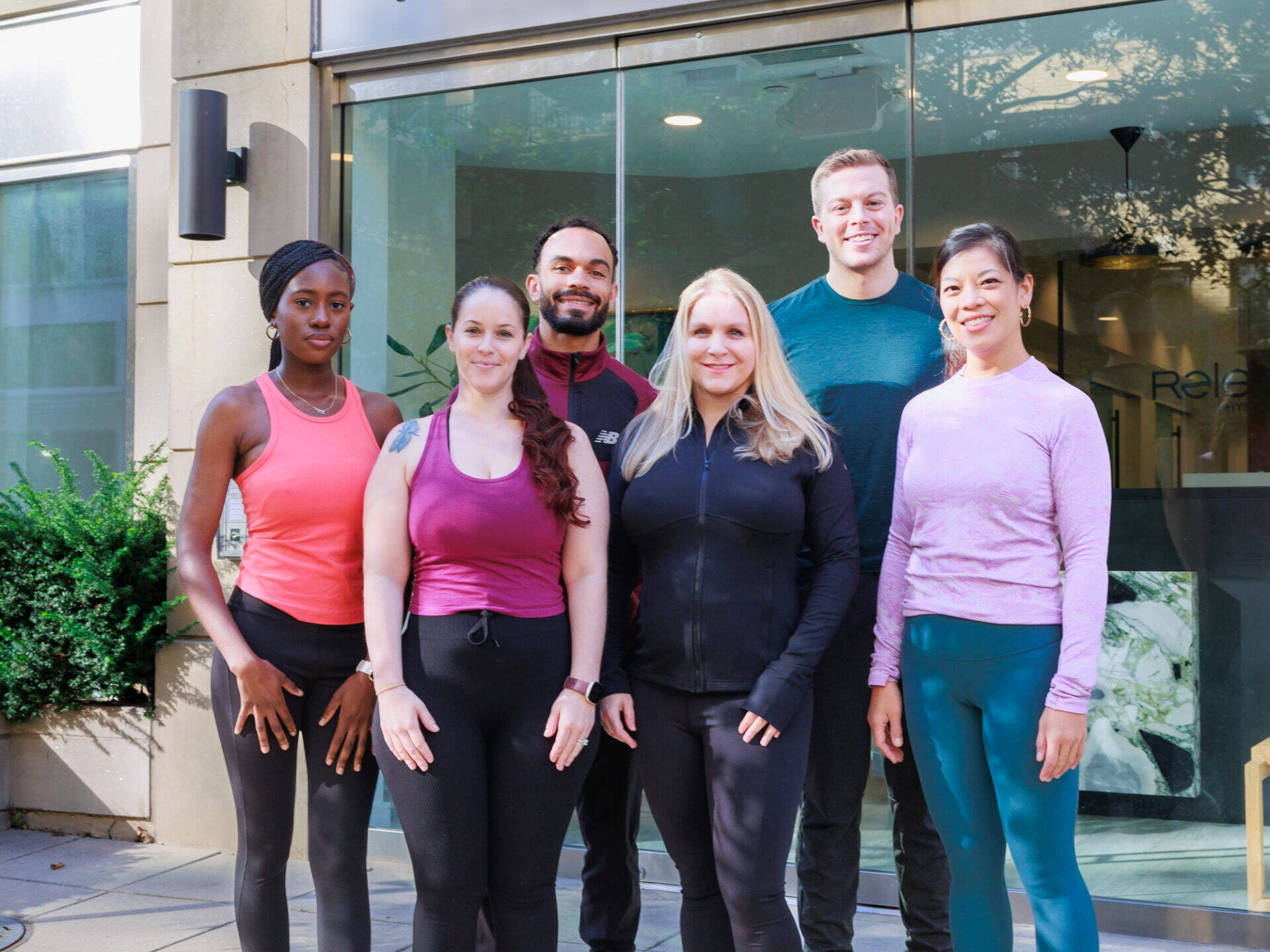
Dr. Cari Simon PT, DPT, CMTPT, ART
Owner & Physical Therapist, Release Physical Therapy Washington, D.C.
Dr. Cari Simon received her Doctorate degree in Physical Therapy from the University of Hartford. A former All-New England and All-State soccer player, she was part of the U.S. Women’s Soccer National Team pool, but ultimately decided to redirect her career in pursuit of her true passion: care. She is now one of the top physical therapists in Washington, DC. As one of the most highly regarded physical therapists in Washington, DC, Dr. Cari Simon’s treatment approach combines manual mobilization and manipulation techniques with individualized therapeutic exercise. She is a full body Active Release Technique (ART) provider. Additionally, Dr. Simon utilizes McConnell, athletic, and Kinesio Taping methods, as well as Trigger Point Dry Needle Therapy. When she is not helping her patients meet their physical goals, Dr. Simon enjoys networking with other physical therapists in Washington, DC, outdoor activities and spending time with her family.
Ethan Gramstad PT, DPT, CMTPT
Physical Therapist, Release Physical Therapy Washington, D.C.
Dr. Ethan Gramstad is the newest addition to the staff at Release Physical Therapy. A native of Virginia, he has recently relocated to Washington, DC following the last two years of practicing PT in Denver, Colorado. He received his Bachelor’s degree from the University of Virginia where he was a member of the UVA Men’s Rowing team for three years. It was that experience that ignited his interest in the science of exercise, as well as physiology and anatomy. He went on to obtain his Doctorate of Physical Therapy from Old Dominion University from Norfolk, Virginia in 2017.
Dr. Gramstad uses manual therapy and mobilization techniques to obtain optimal patient outcomes and places a high priority on establishing a strong patient-therapist relationship. He focuses on assisting his patients in meeting their physical goals and finds satisfaction in the application of individualized exercise programs, as well as dry needling to achieve success. He has previous experience in providing pre and post-operative therapy protocols and treating the outpatient orthopedic population. Besides his rowing days, Dr. Gramstad has personally participated in endurance sports; running Cross Country and multiple marathons and continues to maintain a devotion to a rigorous gym regimen.
Dr. Stephanie Lam PT, DPT, CMTPT
Physical Therapist, Release Physical Therapy Washington, D.C.
Dr. Stephanie Lam received her Doctorate of Physical Therapy from the School of Health Technology and Management at Stony Brook University, after attaining dual degrees in Biology and Psychology from the University of Virginia. She is highly experienced in several fields of adult orthopedics, including post-surgical recovery, acute sports injury rehabilitation, athletic performance improvement, and chronic pain management. She also has a passion for pediatrics and has treated kids of all ages for congenital and developmental issues.
Dr. Lam uses her patient’s individual goals to guide treatment, addressing her patient’s symptomatic impairments while considering their day-to-day ability to function and perform athletic and recreational activities. Dr. Lam incorporates manual therapy throughout her treatments, specializing in extensive deep soft tissue manipulation and mobilizations of the spine and peripheral joints, as well as dry needling.
Deborah Ajala PT, DPT, COMT, CMTPT
Physical Therapist, Release Physical Therapy Washington, D.C.
Dr. Deborah Ajala is an astute physical therapist who takes her time to get to know her patients in order to provide the best possible care. Dr. Ajala’s lifelong passion for caregiving led her to a career in physical therapy. She received a Bachelors degree in Health Sciences with a minor in Exercise Science and Wellness Management from the University of Sciences in Philadelphia, where she obtained a Doctorate in Physical Therapy thereafter. Dr. Ajala holds certifications in Orthopedic Manual Therapy (COMT) and Trigger Point Dry Needling (CMTPT). Her goal with each patient is to optimize their return to function.
Dr. Ajala previously worked at an Outpatient Physical Therapy Clinic in Maryland as a staff clinician. There, she served a diverse patient population treating a wide range of orthopedic conditions including sports medicine, pre/post operative rehabilitation, overuse injuries and several others.
In her free time, Dr. Ajala enjoys spending time with her family and friends, reading, and sports. She also enjoys exploring new DC neighborhoods and is a restaurant enthusiast.
Mia Smyser PT, DPT, COMT, CIDN
Physical Therapist, Pelvic Floor Therapist, Release Physical Therapy Tysons and Washington, D.C.
Dr. Mia Smyser is a native of the DMV. She received her Doctorate in Physical Therapy from the University of Miami, after receiving her Bachelors of Science in Exercise Science from the University of South Carolina. She thinks movement is of foundational importance and is dedicated to improving people’s mobility and function and helping them achieve their optimal physical well-being.
She is passionate about continuing to learn and grow in the profession. She is a Certified Orthopedic Manual Therapist (COMT), certified in Integrative Dry Needling and is continuing her coursework with Herman & Wallace as a pelvic health therapist.
Dr. Smyser previously worked at outpatient physical therapy clinics in Washington, DC and Falls Church, VA, treating a wide variety of conditions including sports medicine, pelvic health, pre/post-operative rehabilitation, and pediatrics, among others.
In her free time, she prioritizes spending time with her husband, son & dog; playing soccer and running; coaching HIIT and checking out new restaurants.
Release Physical Therapy Treatments
Our experienced physical therapists have advanced training in outpatient orthopedic physical therapy. Our physical therapy services include sports therapy, injury rehabilitation, pre-surgical therapy, post-surgical therapy, chronic pain management, as well as wellness and prevention. Specialized treatments at Release Physical Therapy include:
Shockwave Therapy
A non-invasive medical treatment that utilizes acoustic waves to treat various musculoskeletal conditions and promote healing.
K-Laser Therapy
The use of specific wavelengths of light to improve healing time, pain reduction, increase circulation and decrease swelling.
Dry Needling Washington DC
Needle treatment that decreases pain, increases range of motion and improves strength by inactivating myofascial trigger points.
Active Release Technique in Washington, D.C.
Massage and movement-based technique that treats problems with muscles, tendons, ligaments, fascia and nerves.
Therapeutic Medical Massage
Reduces muscular pain and inflammation, relaxes overused muscles, improves posture and movement awareness, and enhances performance.
BFR Training Washington DC
Rehabilitation therapy and performance training technique using a personalized tourniquet system to reduce atrophy and increase strength.
Kineseo® Taping Method
Reduces muscular pain and inflammation, relaxes overused muscles, improves posture and movement awareness, and enhances performance.
Running Assessment Washington DC
Individualized analysis designed to identify strength, gait, and alignment imbalances to prevent injury and improve your current training program.
Functional Training
Exercise regimens that integrate multiple muscle groups, joints and the brain to assist in everyday movement, physical activities and athletics.
Graston Technique
Instrument-assisted soft tissue mobilization used to address soft tissue lesions and fascial restrictions resulting in improved patient outcomes.
Release Physical Therapy Services
At Release Physical Therapy, we treat you with our hands, not just machines. We offer a full range of manual therapies, as well as both traditional and non-traditional techniques for the best in comprehensive care. We work one-on-one with our patients to develop an individualized treatment plan that meets their unique needs, conditions, wellness goals and fitness levels.
Physical Therapy Treatment for Pelvic Floor Issues
At Release Physical Therapy, our experienced therapists conduct a thorough assessment to identify the underlying causes of your pelvic floor issues and create a personalized treatment plan to promote healing and alleviate the problems you’re experiencing.
Physical Therapy Treatment for Upper Back/Shoulder Pain
At Release Physical Therapy, our experienced therapists perform comprehensive assessments to see how they can help with your upper back pain. We then design individualized treatment plans aimed at promoting healing and relieving your specific issues.
Physical Therapy Treatment for Lower Back Pain
At Release Physical Therapy, our seasoned therapists perform comprehensive assessments to pinpoint the root causes of your lower back pain problems. We then design individualized treatment plans aimed at promoting healing and relieving your specific issues.
Physical Therapy Treatment for Knee Pain
At Release Physical Therapy, our seasoned therapists perform comprehensive assessments to pinpoint the root causes of your knee pain problems. We then design individualized treatment plans aimed at promoting healing and relieving your specific issues.
Physical Therapy Treatment for Ankle Pain
At Release Physical Therapy, our experienced therapists conduct thorough assessments to identify the underlying causes of your ankle discomfort. From there, we craft personalized treatment strategies tailored to foster healing and alleviate your unique concerns.
Physical Therapy Treatment for Tennis Elbow Pain
At Release Physical Therapy, our seasoned therapists perform comprehensive assessments to pinpoint the root causes of your tennis elbow pain problems. We then design individualized treatment plans aimed at promoting healing and relieving your specific issues.
Physical Therapy Treatment for Arthritis
At Release Physical Therapy, our expert therapists conduct thorough assessments to gain insight into your arthritis symptoms. With this understanding, we craft personalized treatment strategies aimed at promoting healing and addressing your unique requirements.
Release Physical Therapy Locations
Visit Release Physical Therapy at our flagship office in DC's West End, or our Downtown DC office located within Thesis Personal Training.
West End Location
2134 L St NW, Washington, DC 20037
DIRECTIONS
Hours
Mon – Thurs: 6:00am – 8:00pm
Fri: 6:00am – 5:00pm
Sat – Sun: Closed
Downtown Location
*Located within Thesis Personal Training
1401 New York Ave NW, #100, Washington, DC 20005
DIRECTIONS
Hours
Mon & Wed: 7:00am – 4:00pm
All Other Days: Closed
Now Accepting New Patients
Feel Your Very Best
Whether you’re an athlete that plays hard on the field, or a weekend warrior that plays hard in life, committing to a physical therapy program can help to keep you moving forward.
Latest Blog Posts
The Right Way to Breathe: Understanding the Diaphragm and Pelvic Floor
A condition called FAI (femoral acetabular impingement syndrome) could be the cause of your hip pain. Learn the symptoms and how physical therapy may be able to help.
Understanding Urinary Incontinence: It’s Time to Break the Silence
A condition called FAI (femoral acetabular impingement syndrome) could be the cause of your hip pain. Learn the symptoms and how physical therapy may be able to help.



